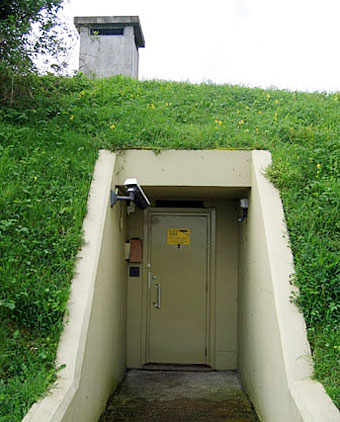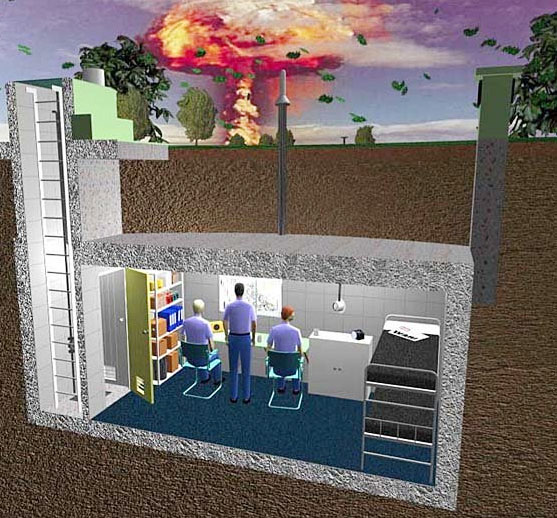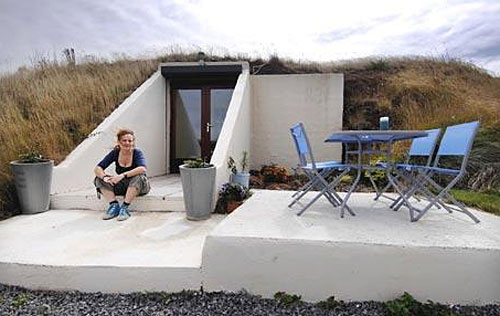Underground
Bunkers
When someone hears the phrase, "underground bunker",
thoughts of conspiracy theories might be the first thing
to come to mind. This is simply a negative stereotype
that has gone too far. While it may seem a bit odd, there
are plenty of practical uses for having a shelter or home
that is located underground. One of the most popular misconceptions
about these types of shelters is that they are only useful
during a nuclear attack. Here are a handful of good uses
for a shelter underground.
 Underground Bunker
Underground Bunker |
|
Storm Shelter
In the last few years there have been a lot of deadly
storms and tornados that have ripped through the heart
of America. These monstrous storms have left a path of
severe devastation, ruining homes and killing people.
Storm shelters first became popular around the same time
the bomb shelter came into existence.
Holes were dug into the ground, usually located close
to the main house for quick and easy access. They were
often made with concrete and would be stocked with food,
water, and medical supplies. These particular underground
bunkers still save hundreds if not thousands of lives
each and every year. It is highly encouraged that if you
do not have one of these structures, you should look into
building one, or having it built for you.
Bomb Shelter
This is the most common type of underground bunker that
comes to mind, largely due to the role they have played
in popular culture. There are many different types of
emergency
shelters that have been used throughout history. The
type of shelter is usually determined by the strength
of the bomb being used. During the Cold War years, many
bunkers were designed to withstand the fallout from a
nuclear bomb. This meant that it was made from materials
that would prevent dangerous levels of radiation from
leaking inside the shelter and harming its occupants.

Nuclear Shelter
During World War II, there were many bunkers called air-raid
shelters that were designed to protect people from the
bombs that fell from Nazi era aircraft. These underground
bunkers saved thousands of lives during that time period.
In many countries where war is common place, there are
tons of these shelters scattered throughout the city.
The more of these bunkers that exist, the safer the people
living in the community will be.
Supply Storage
In recent years, many people living in the United States
have begun to can and store up food for emergencies. A
lot of this survival preparedness is a result of seeing
natural disasters like Hurricane Katrina and the devastation
it left in its path. Many people who lived in the hard
hit areas were without basic necessities like food and
water. In light of that horrible situation, people have
begun to build bunkers as a means of shelter as well as
storage.
Dry goods and canned food can be hidden away in a bunker
and kept safe during an emergency situation, which increases
the individual's chances for surviving the event.

Bunker Converted to a Home
Bunker, Sweet Bunker
And let's not forget that an underground bunker can also
be your year 'round home. Some people repurpose decommissioned
missile silos to serve as homes and bunkers underground.
Other people repurpose other types of bunkers or build
simpler kinds of underground homes that serve this dual
purpose.
Conclusion
Underground bunkers can be detached from an above ground
home or in fact an underground dwelling can serve the
dual purpose of serving as a shelter as well. By debunking
the single-purpose bunker myth, hopefully home builders
and homeowners can think about underground living in a
new way and one in which safety is a top priority.
|